Welcome to the CJBS 250-Research Methods & Statistics for Criminal Justice OER Resource Guide. The guide is intended for faculty teaching CJBS 250 as a “Zero-Cost Textbook” course. This page features OER textbooks, zero cost library resources, government data sources, and interactive resources such as open source data visualization tools and course exercises.
This course will present the research process, types of studies, appropriate descriptive statistical techniques and guidelines for formulating research questions and testable hypotheses. It will also review how to decide on an appropriate population for study, how variables are constructed, and how data are collected and organized, and discuss sampling methods and sample size.
A variety of research methods will be covered, including experimental, quasi-experimental and survey methods, as well as other forms of data collection and the use of existing databases. Students will also be exposed to qualitative methodologies including ethnography, observation, content-analysis, and interviewing techniques.
Although the course is designed to provide the necessary foundations to go on to further courses and/or a career in research, its primary focus will be to make students into better consumers of research first so that they can critically analyze and interpret the impact of criminal justice research they might conduct or be exposed to in the field.
The course will be kept interactive and practical through the use of current research and a discussion of its applications.
Learning Outcomes
